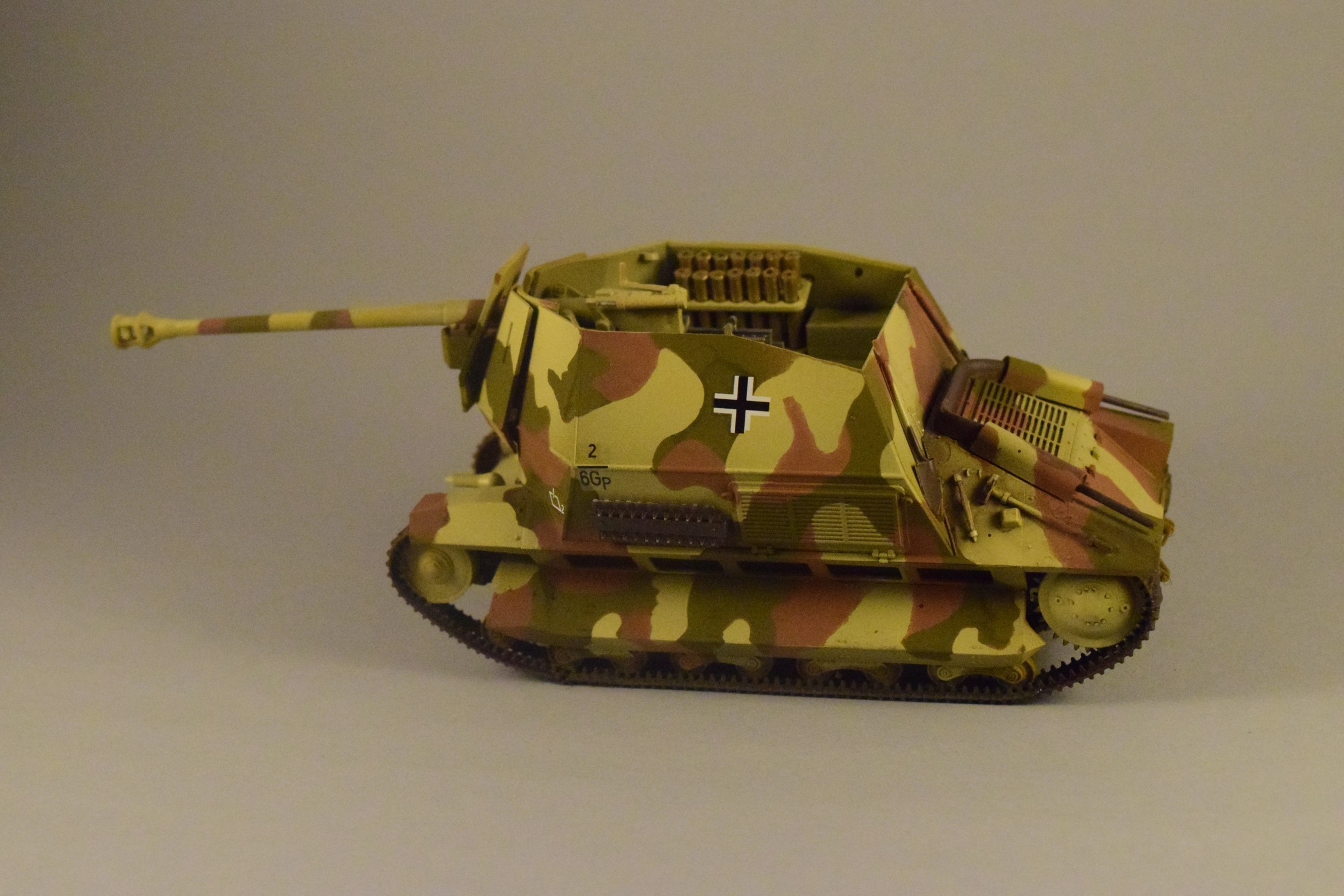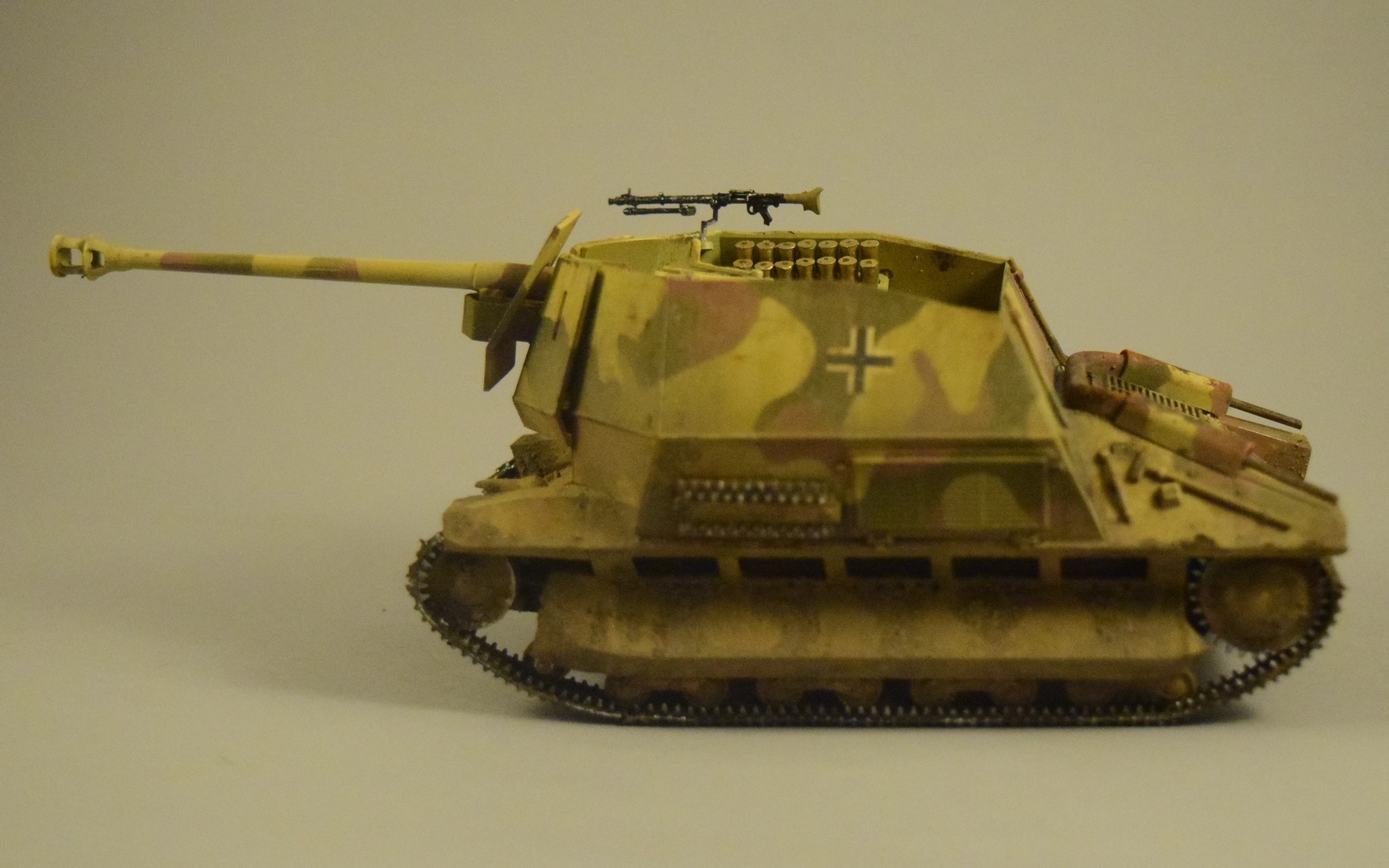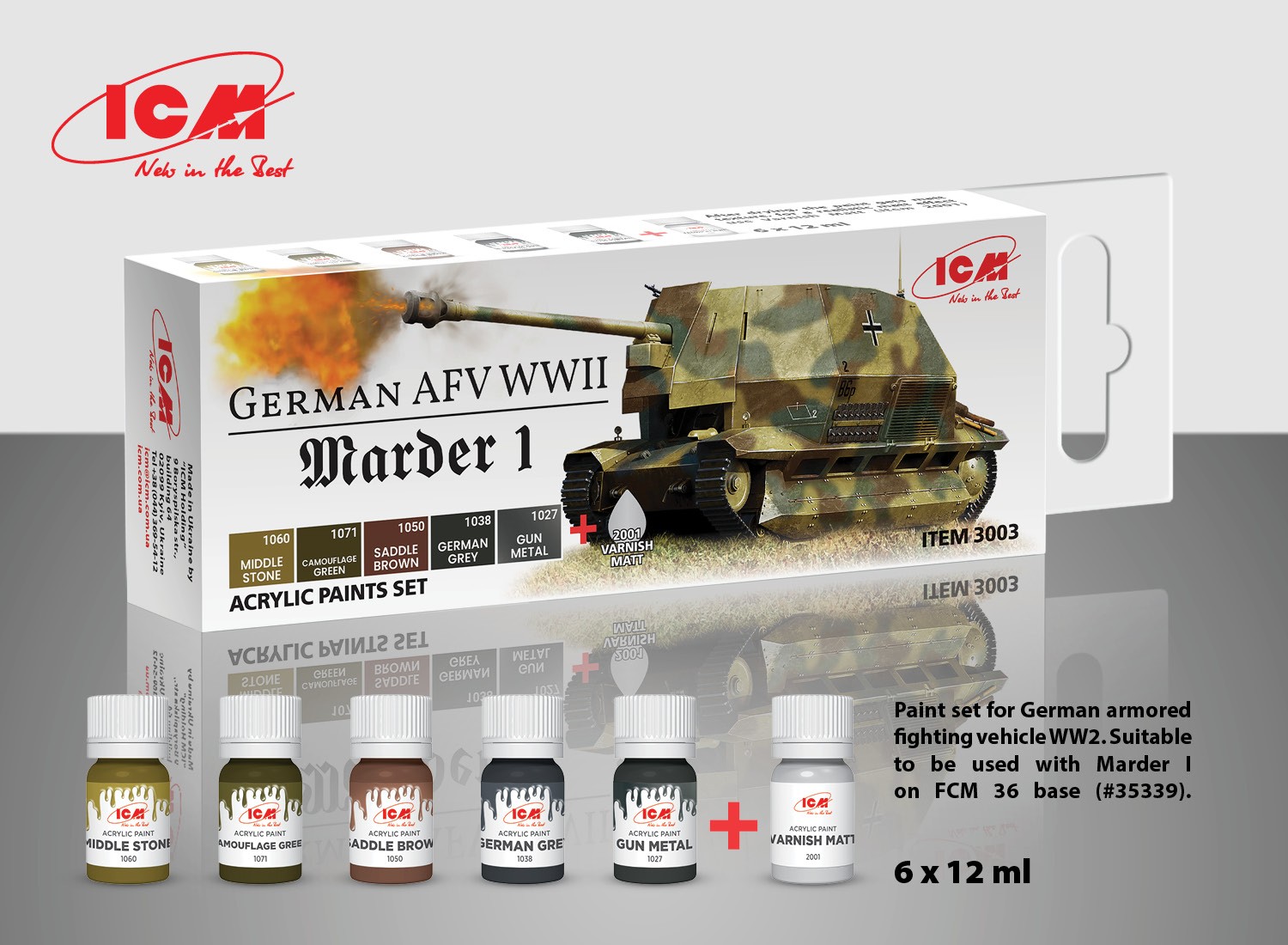ICM Acrylic paints
I was really curious when I saw that ICM offers paint sets for some of their models. After all, the paint market is very saturated with a lot of very good options to choose from. So when I reviewed the Marder I kit by ICM I jumped on the opportunity to review the paint set that comes with it, too.
The paint set comes in a nice box that keeps the bottles safe. The bottles are made of plastic, and are relatively small (12 mL); however since the mixing ratio is 40:60, you get almost double the amount of paint. The bottle caps are easy to screw off - a minor detail, but something that is very welcome indeed.
The paint has a very thick consistency; it needs dilution even for brushwork. I tried using water first as a diluent, and it worked brilliantly. I made a nice, smooth mix for airbrushing, not overly worried about the suggested ratios to see how “finicky” the paint is. I expected a period of experimentation to get the right ratio (not too thin, so it covers sufficiently, and not too thick so that it does not clog the airbrush), but it worked the first time perfectly. It also worked every time I used the paint, so based on my personal experience it is quite easy to use with an airbrush. They are also great for hairy sticks as I found out when I did some touch-up on the camo after removing the silly putty I used for masking. The paint goes on very well, it dries fast and it dries flat, providing a very good surface for filters.
I used Vallejo’s primer on the model, and the paint adhered to it perfectly well. Later on the masking method I used (silly putty) did not damage the surface (some paints are easier to “peel off” with masks than others). I did some experimental scratches on the bottom of the hull, and I could not scratch the pain with a toothpick.
The Marder I kit was painted in the “usual” 3 tone German camo with a Dunkelgelb base. In this I found one issue: instead of a light, yellowish base we get a brown one: middle stone. I am not an expert in German camo colors, but I was under the impression that all known shades of base yellow (Dunkelgelb) are actually lighter, yellowish colors, rather than light brown. I used this color as a basecoat, and used a different brand’s Dunkelgelb to create the appropriate shade. The green and brown colors were lightened up a bit with the base color to account for scale effect. The German Gray is also quite dark - it will need lightening for use which is not really an issue -it is harder to make a color darker than lighter, after all. The paints (obviously) mix very well with each other. You do get a flat varnish with the set, which is useful to seal and protect the paintwork. I went ahead with filters and weathering without applying it first because the surface was suitably matte already; I did use it once I was finished, though.
The metal color (gunmetal) is not very convincing, to be honest. This is a common issue with acrylic paints -most look grainy and not at all like a smooth metallic surface. I used AK’s True Metal wax-based metal paints for the ammunition and the gun breach. You do not get a brass color for the ammunition -it may be possible that these vehicles were supplied with steel casings which were protected by gray or green varnish; I chose to paint them brass, though for the review.
About color fidelity... this is a big can of worms I am quite reluctant to get into. The color you see on screen can be very different from the color you see under a fluorescent light -and that is very different from the color you see in bright sunlight or under a cloudy sky. The colors are further modified by the scale effect, filters, weathering , so I did not try to get authentic paint examples to compare these colors to (not to mention paint ages in 80 years, too...) I found the results convincing - the vehicle looks like a German vehicle painted in a 3 tone camo pattern. For the majority of modelers it is probably enough.
Since ICM paints are acrylic paints, the enamel-based weathering products, oils did not damage the surface. I also used water-based products (AK’s pencils, “mud” products), and the painted surface was perfectly fine with a generous application of water, too.
Summary
All-in-all the paints performed very well. The question is, whom are they for? They seem to be sold as sets: either for a specific model, or as a single large set which consists of all available 80 colors. For a seasoned model builder the individual sets are probably redundant since most required colors are usually already in our collection in several shades and from several companies. However if you only just start out in the hobby, or you only want to build this particular model (maybe you love it in World of Tanks and want to have it on your shelf), these sets are great with the models. You get everything in a nice package: a reasonably detailed, easy-to-build model and all the colors you need for it. These paints are non-toxic and can be diluted with water, so I would be happy to give them to a child for his or her first, second or even tenth scale model. (Grandpa moment: back in my day we used Revell and Humbrol enamels…) The large set is very attractive (depending on the price) as you get a big collection of useful and easy to use paints. (Update: It appears you can buy individual paints as well, so replacing colors you ran out of should not be an issue.)
Overall I really like these paints; they work well, and would be perfectly happy to use them for most of my modelling subjects. Some specific colors may be missing (you do get 80 colors, but maybe some special ones are not included), but overall if you are thinking about getting a big box of the "basics" I can absolutely recommend this set.






























